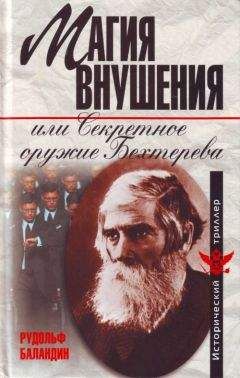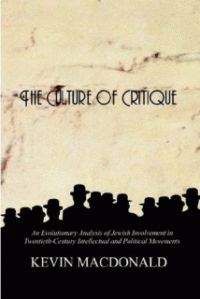Нейл Смелзер - Социология. Учебник

Скачивание начинается... Если скачивание не началось автоматически, пожалуйста нажмите на эту ссылку.
Жалоба
Напишите нам, и мы в срочном порядке примем меры.
Описание книги "Социология. Учебник"
Описание и краткое содержание "Социология. Учебник" читать бесплатно онлайн.
Книга Н. Смелзера «Социология» представляет курс лекций по общей социологии для студентов высших учебных заведений.
Достоинство книги в том, что она написана максимально доступным языком и полностью соответствует содержанию курса «Социология», как он отражён в государственном стандарте, а потому данное учебное пособие может быть базовым по этому курсу.
Книга Смелзера также предназначена для широкого круга читателей и, в первую очередь, для предпринимателей и руководителей.
На русском языке это уже второе издание.
U.S. Bureau of the Census. Projections of population in the United Stales: 1977–2050. Current Population Reports (Series P-25, No. 704). Washington, D.C.:U.S. Government Printing Office, June 1977.
U.S. Bureau of the Census. Ancestry and language in the U.S. Current Population Reports (Series P-23, No. 116), November, 1979.
U.S. Bureau of the Census. Money income of families and persons in the United States: 1978. Current Population Reports (Series P-60, No. 123). Washington, D.C.: U.S. Government Printing Office, June 1980.
U.S. Bureau of the Census. Characteristics of the population below the poverty level: 1978. Current Population Reports (Series P-60, No. 124). Washington, D.C.: U.S. Government Printing Office, July 1980.
U.S. Bureau of the Census. Money income of households, families, and persons in the United States. Current Population Reports: Consumer income (Series P-60, No. 132). Washington, D.C.: U.S. Government Printing Office, 1982.
U.S. Bureau of the Census. Household and family characteristics. Current Population Reports: Population characteristics. March, 1981. Washington, D.C.: U.S. Government Printing Office, 1982.
U.S. Bureau of the Census. Historical statistics of the U.S.: Colonial times to 1970. Washington, D.C.: U.S. Government Printing Office, 1975.
U.S. Bureau of the Census. Statistical abstract of the United States: 1980 (101 st ed.). Washington, D.C.: U.S. Government Printing Office, 1980.
U.S. Bureau of the Census. Statistical abstract of the United States: 1981 (102 nd ed.). Washington, D.C.: U.S. Government Printing Office, 1981.
U.S. Bureau of the Census. Statistical abstract of the United States: 1982 (103 rd ed.). Washington, D.C.: U.S. Government Printing Office, 1982.
U.S. Bureau of the Census. Women in the American Economy. (Washington, D.C.: U.S. Government Printing Office, 1986).
U.S. Bureau of Indian Affairs. Indian service population and labor force estimates. Washington, D.C.: U.S. Government Printing Office, 1981.
U.S. Congress. Developments in aging: 1976, A report of the Special Committee on Aging, United States Senate (Part 1). Washington, D.C.: U.S. Government Printing Office, 1977.
U.S. Department of Health and Human Services. Advance report of final natality statistics 1980. Monthly Vital Statistics Report, 1982, 31 (8), 1.
U.S. Department of Health, Education, and Welfare. Work in America: Report of a special Task force to the Secretary of Health, Education, and Welfare. Cambridge, Mass.: Massachusetts Press, 1973.
U.S. Department of Labor, Bureau of Labor Statistics. Occupational projections and training data (BLS Bulletin No. 2020). Washington, D.C.: U.S. Government Printing Office, April, 1979.
U.S. Department of Labor, Bureau of Labor Statistics. Analyzing 1981 earnings data from the current population survey. Washington, D.C.: U.S. Government Printing Office. 1981.
Uribe-Villegas, O. On the social in language and the linguistic in society. In O. Uribe-Villegas (Ed.), Issues in sociolinguistics. The Hague: Mouton, 1977.
Vanek, J. Housewives as workers. In A.H. Stromberg & S. Harkness (Eds.), Women working. Palo Alto, Calif.: Mayfield, 1978.
Vasquez, J.A. A learning theory of the American anti-Vietnam war movement. Journal of Peace Research, 1976, 13, 299–314.
Veltford, H.R., & Lee, G.E. The cocoanut grove fire: A study in scapegoating. Journal of Abnormal and Social Psychology, 1943, 38, 138–154.
Verba, S., & Nie, N. Participation in America: Political democracy and social equality. New York: Harper & Row, 1972.
Vineyard, D. The rediscovery of the elderly. Society, 1978, 15, 24–29.
Volkov, P.M. Higher social science education in the USSR. International Social Science Journal, 1979, 31, 130–137.
Wagner, R. Culture as creativity. In J.L. Dolgin, D.S. Kennitzer, & D.M. Schneider (Eds.), Symbolic anthropology. New York: Columbia University Press, 1977.
Wagner, R.H. Environment and man. New York: Norton, 1971.
Walker, K.E., & Woods, M.E. Time use: A measure of household production of family goods and services. Washington, D.C.: Center for the Family, American Home Economics Association, 1976.
Wallerstein, I. The modern world system (Vol. 1). New York: Academic Press, 1976.
Wallerstein, J.S., & Wyle, C.J. Our law-abiding lawbreakers. Probation, 1947, 25, 107–112.
Warner, W.L., & Lunt, P.S. The social life of a modern community. New Haven: Yale University Press, 1941.
Warren, D.I. Helping networks. South Bend, Ind.: University of Notre Dame Press, 1981.
Waters, H.P. What TV does to kids. Newsweek, February 21, 1977, pp. 62–70.
Webb, E. J., Campbell, D.T., Schwartz, R., & Sechrest, L. Unobtrusive measures: Nonreactive research in the social sciences. Chicago: Rand McNally, 1966.
Weber, M. [From Max Weber: Essays in sociology] (H. Gerth & C.W. Mills, Eds. and trans.). New York: Oxford University Press, 1946. (Originally published in 1919.)[37]
Weber, M. General economic history (F.H.Knight, trans.). New York: Free Press, 1950. (Originally published in 1927)
Weber, M. The sociology of religion (E. Fischoff, trans.). Boston: Beacon Press, 1964. (Originally published in 1922)
Weber, M. Economy and society: An outline of interpretive sociology (Vol. 1) (G. Roth & C. Wittich, trans, and eds.). New York: Bedminster Press, 1968. (Originally published in 1925).
Weber, M. Economy and society: An outline of interpretive sociology (Vol.2) (H. Gerth & C. Wright Mills, trans, and eds.). New York: Bedminster Press, 1968. (Originally published in 1922)
Weber, M. Class, status, party. In H.H. Gerth & C.W. Mills (Eds.), From Max Weber: Essays in sociology. London: Routledge and Kegan Paul, 1970. (Originally published in 1922)
Weed, P.L. The white ethnic movement and ethnic politics. New York: Praeger, 1973.
Wegner, E.L. Graduate education. In D.W. Swift (Ed.), American education: A sociological view. Boston: Houghton Mifflin, 1976.
Welter, B. The cult of true womanhood: 1820–1860. In M. Gordon (ed.), The American family in social-historical perspective. (New York: St. Martin's Press, 1978.
Westley, F. «The cult of man»: Durkheim's predictions and new religious movements. Sociological Analysis, 1978, 39, 135–145.
Whitehurst, R.N. Alternate lifestyles. In I. Rodertson (Ed.), The social world. New York: Worth, 1981.
Whiting, J.W.M., & Child, J.L. Child training and personality. New York: Yale University Press, 1953.
Whittington, H.G. The frenzied life of a Type A woman. San Francisco Chronicle, July 8, 1982.
Whorf, B.L. Science and linguistics. Technology Review, 1940, 44.
Whyte, M.K. Small groups and political rituals in China. Berkeley: University of California Press, 1974.
Whyte, W.F. Street corner society. Chicago: University of Chicago, Press, 1943.
Wilcox, J., & Mitchell, J. Effects of group acceptance/rejection in a task-oriented problem-solving group interaction. Small Group Behavior, 1979, 8, 169–177.
Wilder, D.A. Perceiving persons as a group: Effects on attributions of causality and beliefs. Social Psychology, 1978, 41, 12–23.
Wilhelm, S.M. Who needs the Negro? Garden City, N.Y.: Doubleday/Anchor, 1971.
Williams, R. American society: A Sociological interpretation. New York: Knopf, 1960.
Williams, R, Jr. Strangers next door: Ethnic relations in American communities. Englewood Cliffs, N.J. Prentice-Hall. 1964.
Williams, T.R. Introduction to socialization. St. Louis: Mosby, 1972.
Willkie, W. One world. New York: Simon & Schuster, 1943.
Wilson, B.R. Religion in secular society. London: Watts, 1966.
Wilson, E.O. Sociobiology: The new synthesis. Cambridge: Harvard University Press, 1975.
Wilson, J. Religion in American society: The effective presence. Englewood Cliffs, N.J.: Prentice-Hall, 1978.
Wilson, R.A., & Schulz, D.A. Urban sociology. Englewood Cliffs, N.J.: Prentice-Hall, 1978.
Wilson, W.J. The declining significance of race: Blacks and changing American institutions. Chicago: University of Chicago Press, 1978.
Wirth, L. Urbanism as a way of life, American Journal of Sociology, 1938, 44, 3-24.
Wirth, L. The problem of minority groups. In R. Linton (Ed.), The science of man in the world crisis. New York: Columbia University Press, 1945.
Witkin, H.A. Criminality in XYY and XXY men. Science, 1976, 193, 547–555.
Wolfe, T. Mauve gloves and madmen, clutter and vine. New York: Farrar, Strauss, & Giroux, 1976.
Wood, J.L. Student political activism. In D.W. Swift (Ed.), American education: A sociological view. Boston: Houghton Mifflin, 1976.
Worsley, P. The trumpet shall sound. London: MacGibbon and Kee, 1957.
Wurthnow, R. The consciousness reformation. Berkeley: University of California Press, 1976. (a)
Wurthnow, R. The new religions in social context. In C.Y. Glock & R.N. Bellah (Eds.). The new religious consciousness. Berkeley: University of California Press, 1976. (b)
Yinger, J.M. Ethnicity in complex societies: Structural, cultural, and characterological factors. In L.A. Coser & O.N. Larsen (Eds.), The uses of controversy in sociology. New York: Free Press, 1976.
Younians, E.G. The rural aged. Annals of the American Academy of Political and Social Science, 1977, 429, 81–90.
Young, M., & Wilmott, P. Family kinship in East London. Baltimore: Penguin, 1957.
Youth gangs are back — on old turf and new. U.S. News & World Report June 29, 1981, pp. 46–47.
Zablocki, B. Alienation and charisma: A study of contemporary America communes. New York: Free Press, 1980.
Zald, M.N., & Ash, R. Social movement organizations: Growth, decay, and change. Social Forces, 1966, 44, 327–341.
Примечания
1
Примордиальный — первичный, исконный. (Ред.)
2
Ф.Теннис определяет Gemeinschaft (нем.) как общину, в отличие от Geselischaft — общества
3
Ортодонт — стоматолог, выравнивающий зубы. (Ред.)
4
Заранее формирующая предполагаемый идеал. (Ред.)
5
Dead on arrival — доставлен (в больницу) мертвым. (Ред.)
6
В русском разговорном языке мы называем такие организации учреждениями, административными управлениями и просто организациями. (Ред.)
7
Э. Гидденс, один из видных современных теоретиков в области социологии, считает, что бюрократии должно быть уделено столь же важное значение в объяснении социальных и экономических процессов современных обществ, как и экономике, культуре и социальным отношениям. (A. Giddens. Social theory and modern sociology. Cambridge. Polity Press. 1987. Pp. 22–29.) Мощью партийно-хозяйственной бюрократии СССР во многом объясняются те трудности, которые претерпевают государства СНГ в процессе модернизации экономики и политической жизни (ред.)
8
Американцы мексиканского происхождения
9
В этом разделе произведены небольшие сокращения. — Ред.
10
Термин «индеец» — неверное название, которое употребляли первые путешественники, намеревавшиеся высадиться в Ост-Индии. Термин прижился, и лишь недавно распространилось более точное название — «коренные американцы» (Примеч. авт.)
11
От англ. «age» (эйдж) — возраст (Ред.)
12
«Деноминация» — типично американское явление, выражающее стремление различных вероучений завоевать сторонников. К настоящему времени численность вероучений — деноминаций превышает две сотни наименований. (Ред.)
13
Важно заметить, что когда «предсказанное» затопление не произошло, группа в большинстве своем не распалась. Было найдено «объяснение»: «среди нас находились неверующие, потоп наступит позже». Другие члены секты отказались от своей веры. Таким путем Л. Фестингер выявил одну из закономерностей разрешения когнитивного диссонанса. (Ред.)
Подписывайтесь на наши страницы в социальных сетях.
Будьте в курсе последних книжных новинок, комментируйте, обсуждайте. Мы ждём Вас!
Похожие книги на "Социология. Учебник"
Книги похожие на "Социология. Учебник" читать онлайн или скачать бесплатно полные версии.
Мы рекомендуем Вам зарегистрироваться либо войти на сайт под своим именем.
Отзывы о "Нейл Смелзер - Социология. Учебник"
Отзывы читателей о книге "Социология. Учебник", комментарии и мнения людей о произведении.


























